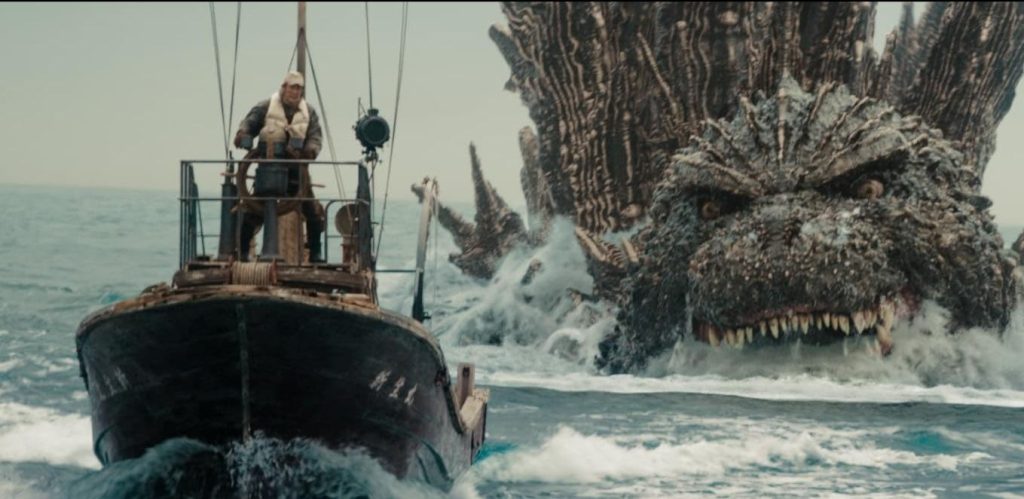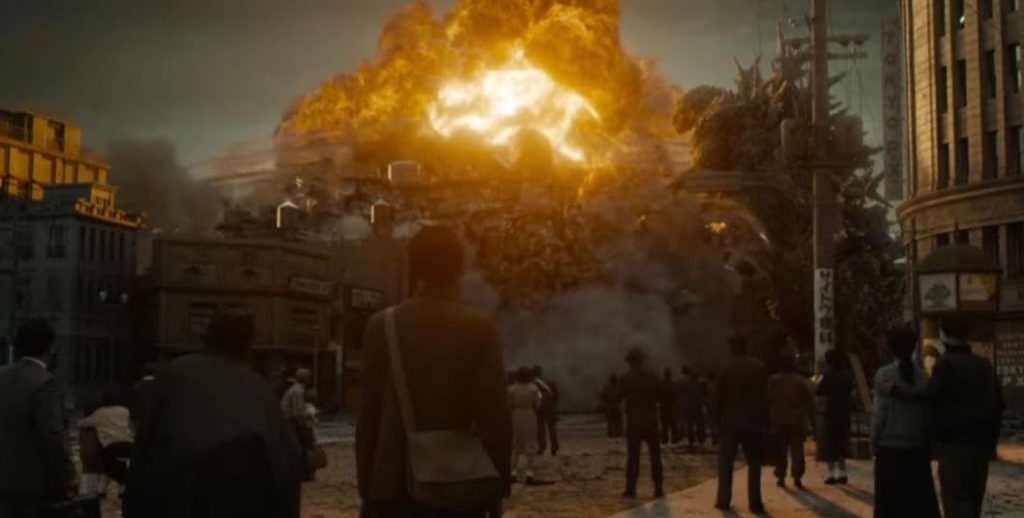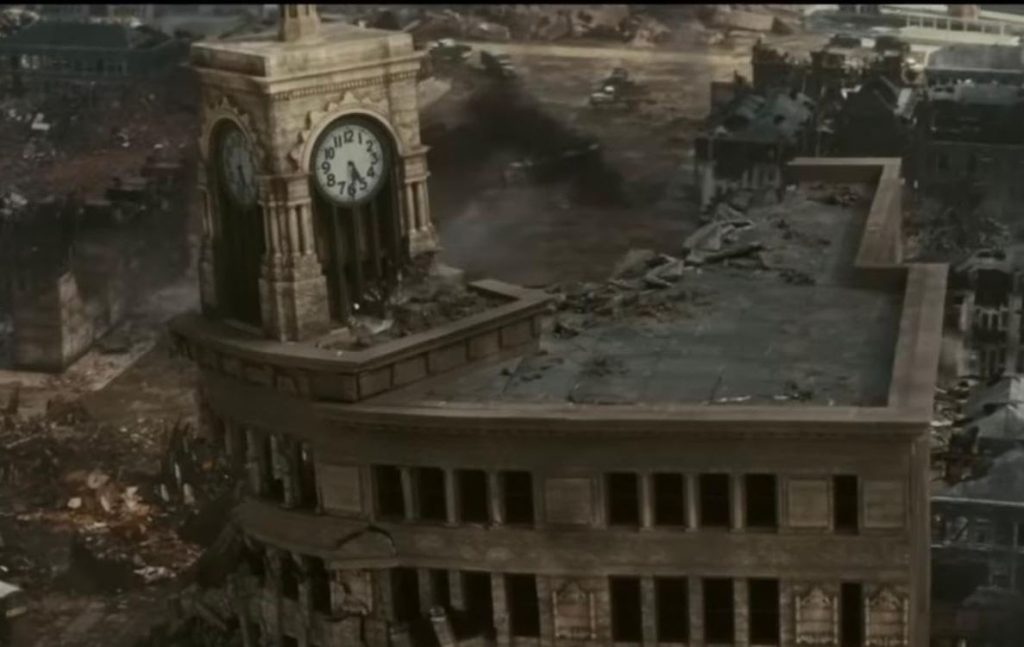
When I was a wee lad, my father tells me, I fell asleep in protest of how long it was taking for the 1976 King Kong to get around to showing the monster. As I’ve grown older and matured in my cinematic tastes, I’ve come to appreciate the suspenseful restraint of classics like Jaws and Alien that show their great monsters sparingly and therefore to greater effect. There is one thing these films have going for them even in the stretches without the monsters we all came to see, though, that is lacking in that iteration of Kong, as well as far too many Godzilla movies. Despite a strong cast led by Jeff Bridges, Jessica Lange, and Charles Grodin, the human characters just aren’t interesting enough to make those long, monster-free stretches enjoyable. It’s the same problem the Jurassic World reboot franchise has when compared to the original Jurassic Park, and why they resorted to getting the gang back together for the increasingly diminished returns of the sequels.
Takashi Yamazaki’s G Minus One gets everything right in both departments. It wastes no time in introducing us to our protagonist, kamikaze pilot Koichi Shikishima (Ryunosuke Kamiki), and his central conflict: returning to an Odo Island base, he claims his plane had a technical issue that prevented him from flying his mission, but no such issue can be found. Shikishima is a failed kamikaze, a designation that carries extreme shame in WWII-era Japanese society. After setting up this compelling character arc that will only grow richer and deeper throughout the movie, we get right to the first Godzilla attack, and it fucking rules.

Yamazaki, who not only wrote and directed G Minus One but was also in charge of the visual effects, evokes a palpable and real sense of the mass destruction wrought by the great green beast unequaled by either the too-tactile obviousness of the models wrecked by a man in a rubber suit that birthed the genre, or the too-slick CGI of the Hollywood franchise begun in 2014 with the reboot helmed by Gareth Edwards (which, incidentally, also spent far too much time getting to the good stuff and far too little effort creating engaging human characters). The monster’s attack on the military base is sudden and devastating, and it builds nicely onto Shikishima’s character arc when he freezes up and is unable to fire on the beast, compounding his survivor’s guilt when he is one of the only men to escape the attack alive.
It only gets worse when he arrives home to find Tokyo bombed to shit, his parents and neighbors dead, and he connects with a woman named Noriko (Minami Hamabe) who has rescued an adorable little girl, Akiko (Sae Nagatani), also orphaned by the bombing. Shikishima takes on a job as a minesweeper and works hard to care for this makeshift family of his, but he cannot achieve the measure of peace this should afford him because of his guilt. The monster, he knows, is still out there, and so even though WWII has ended, his personal war is still not over.

This would be the stuff of great drama, or at least melodrama, even if the monster were only metaphorical, but the great thing about G Minus One is it gets to have its cake and eat it too. As we are getting to know and love Shikishima and his family, as well as the colorful crew of the minesweeping boat where he works, Godzilla is mutated by the nuclear bomb testing at Bikini Atoll and becomes even more powerful. Seemingly invincible, in fact. In classic Godzilla-movie fashion, it will take an absurdly elaborate, pseudoscientific plan to stop the creature, and there will be a hell of a lot of awesome destruction along the way. What makes this one stand high above most of the rest of the genre is not just the greatness of its big moments (though the action set pieces are all top-notch), but the genuine affection it manages to build for its characters in the smaller ones.
Leave a Reply